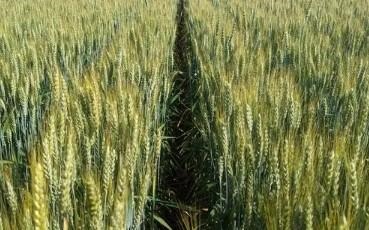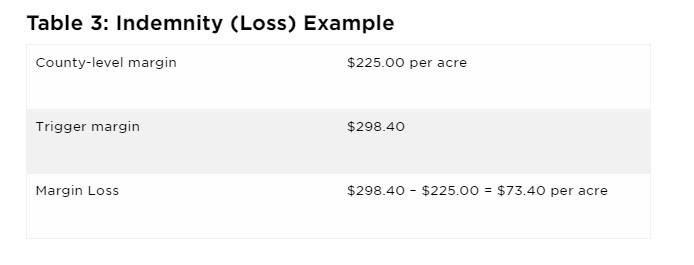By Heidi Reed
On Monday, June 5 and Tuesday, June 6, local millers, grain brokers, and agronomists toured Mid-Atlantic wheat growing regions in an annual effort to estimate new crop yield and quality.

Average yields presented were estimated several weeks before harvest, and randomly sampled from a few locations in large fields using the protocol outlined at "Home Stretch: Evaluating Your Small Grain Crops" (Figure 1). One yield component that we did not measure in the tour is kernel weight, as it was too early in the plant's development for that. Our yield estimate formula assumes a fixed kernel weight. This is a yield component that is affected by drought at the grain filling stage, so our yield estimates are likely an overestimate. Additionally, since the tour in the first week of June, some isolated heavy rainfall and wind have already caused severe lodging in some fields, which will lower yields. Therefore, these estimates may not reflect actual harvest yields.

Figure 1. The first step to yield estimates is counting the number of viable tillers in 5 feet of row. Photo Credit: Heidi Reed, Penn State
Adams, Franklin*, and York Counties:
- 6 fields
- Planting date: October 7 to October 22
- Seeding rate: 1.1-1.8 million seeds per acre
- *Franklin County excluded this year
- Estimated yield: 103 bu/A (range 84-123 bu/A)
- 2022 - 101 bu/A (range 85-131 bu/A)
- 2021 - 103 bu/A (range 81-140 bu/A)
- 2020 - 110 bu/A (range 81-139 bu/A)
- 2019 - 81 bu/A (range 60-120 bu/A)
Berks, Lancaster, and Lebanon Counties:
- 5 fields
- Planting date: By mid-October
- Seeding rate: 1.2 to 1.9 million seeds per acre
- Estimated yield: 106 bu/A (74-165 bu/A)
- 2022 - 103 bu/A, range 90-118 bu/a
- 2021 - 79 bu/A (68-111 bu/A)
- 2020 - 105 bu/A (44-119 bu/A)
- 2019 -99 bu/A (88-106 bu/A)
All fields received fall fertility, with some receiving dairy and poultry manure. All fields received growth regulator in the spring. Fungicide applications occurred during the vegetative stage and at flowering in all fields, with Miravis Ace favored for the late application. According to the Fusarium Head Blight Prediction Center, scab risk was low for varieties with any resistance to scab during the week or two around flowering, due to the dry weather. With these two considerations, it is not surprising that scab incidence was absent in all fields. However, fields were at the milk stage to transitioning to soft dough, so it was a bit early to detect scab at the time of the tour for some fields. Some diseases were present at low levels at multiple fields, including leaf rust and Septoria leaf blotch. There was evidence of low levels of powdery mildew earlier in the season in York and Adams Counties. Cereal leaf beetle damage was present but very minor.
Participants in the tour noted fewer spikelets per head and kernels per spikelet than in prior years. Many also noted that kernels were smaller than expected.
With harvest set to start in the next week or so in the southeast, we hope yield and quality will hold, save some lodging from expected scattered thunderstorms. We expect low vomitoxin levels due to the minimal scab presence this year, but other quality parameters such as test weight and falling number could be impacted by the drought around grain fill.
Source : psu.edu